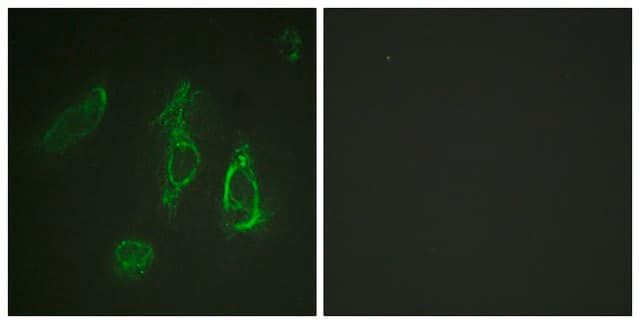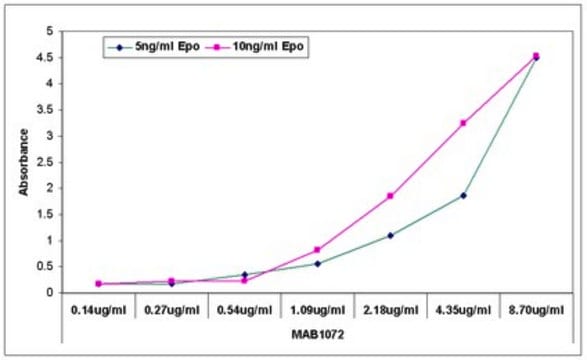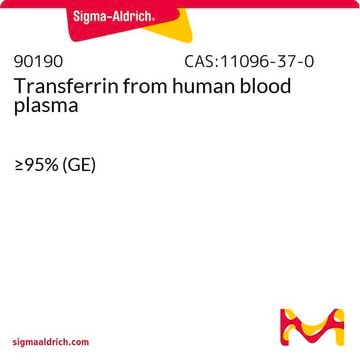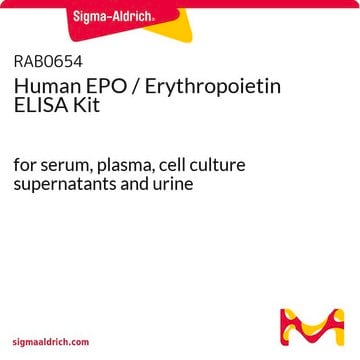MABS1287
Anti-EPO-R Antibody, clone VP-2E8
clone VP-2E8, from mouse
Sinónimos:
Erythropoietin Receptor
About This Item
Productos recomendados
origen biológico
mouse
Nivel de calidad
forma del anticuerpo
purified immunoglobulin
tipo de anticuerpo
primary antibodies
clon
VP-2E8, monoclonal
reactividad de especies
human
envase
antibody small pack of 25 μg
técnicas
flow cytometry: suitable
immunocytochemistry: suitable
immunofluorescence: suitable
immunoprecipitation (IP): suitable
isotipo
IgG1κ
Nº de acceso NCBI
Nº de acceso UniProt
Condiciones de envío
ambient
modificación del objetivo postraduccional
unmodified
Información sobre el gen
human ... EPOR(2057)
Descripción general
Especificidad
Inmunógeno
Aplicación
Immunoprecipitation Analysis: A representative lot detected EPO-R in Immunoprecipitation applications (Maxwell, P., et. al. (2015). Br J Haematol. 168(3):429-42).
Immunofluorescence Analysis: A representative lot detected EPO-R in Immunofluorescence applications (Maxwell, P., et. al. (2015). Br J Haematol. 168(3):429-42).
Flow Cytometry Analysis: A representative lot detected EPO-R in Flow Cytometry applications (Maxwell, P., et. al. (2015). Br J Haematol. 168(3):429-42).
Signaling
Calidad
Immunocytochemistry Analysis: 1:500 dilution of this antibody detected EPO-R in starved UT-7 cells.
Descripción de destino
Forma física
Almacenamiento y estabilidad
Handling Recommendations: Upon receipt and prior to removing the cap, centrifuge the vial and gently mix the solution. Aliquot into microcentrifuge tubes and store at -20°C. Avoid repeated freeze/thaw cycles, which may damage IgG and affect product performance.
Otras notas
Cláusula de descargo de responsabilidad
¿No encuentra el producto adecuado?
Pruebe nuestro Herramienta de selección de productos.
Certificados de análisis (COA)
Busque Certificados de análisis (COA) introduciendo el número de lote del producto. Los números de lote se encuentran en la etiqueta del producto después de las palabras «Lot» o «Batch»
¿Ya tiene este producto?
Encuentre la documentación para los productos que ha comprado recientemente en la Biblioteca de documentos.
Nuestro equipo de científicos tiene experiencia en todas las áreas de investigación: Ciencias de la vida, Ciencia de los materiales, Síntesis química, Cromatografía, Analítica y muchas otras.
Póngase en contacto con el Servicio técnico








